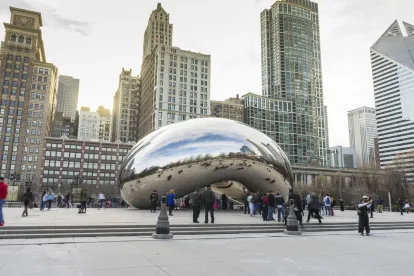A person in possession of a debtor’s property upon a bankruptcy filing now has more guidance from the Supreme Court as to the effect of the automatic stay. In City of Chicago, Illinois v. Fulton, 141 S. Ct. 585 (2021), handed down on January 14 of 2021, the Court was faced with the issue of whether the City of Chicago (the “City”) was liable for the violation of the automatic stay for refusing to return vehicles it impounded pre-petition. Issuing a narrow decision under Section 362(a)(3) of the Bankruptcy Code, the Court held that it was not.
In Fulton, the City impounded vehicles due to their owners’ failure to pay fines for various infractions. 141 S. Ct. at 589. The owners filed bankruptcy petitions and demanded the return of their vehicles, which the City refused. Id. The bankruptcy courts held the City’s retention of the vehicles after the owners’ bankruptcy filings was an exercise of “control over” the owner’s property, constituting a stay violation under Section 362(a)(3) of the Bankruptcy Code. Id. The City appealed. The Supreme Court heard the case to resolve the following issue: whether an entity that retains possession of the property of a person who files bankruptcy violates the automatic stay under Section 362(a)(3). Id. at 589-90.
At issue was the applicability of two competing provisions of the Bankruptcy Code: (1) was this an automatic stay violation governed by Section 362, or (2) should this have been a “turnover action” governed by Section 542? As any secured lender and landlord knows, the answer to that question is meaningful.
Being found in violation of the automatic stay can have very real consequences. A proceeding to enforce the automatic stay is usually fast – commenced by a motion – and can be heard on a relatively expedited basis. It is governed by Section 362 of the Bankruptcy Code. The debtor can seek damages, and for individual debtors, Section 362(k) of the Bankruptcy Code even affords punitive damages, which some courts will apply to corporate debtors.
Alternatively, a “turnover action” under Section 542 of the Bankruptcy Code is a much lengthier, more onerous process for the debtor. It requires the debtor to file an “adversary proceeding,” which is essentially a full civil lawsuit, commenced by a complaint and affords a full answer period, discovery, and dispositive motions. Even on an expedited basis, a debtor will be litigated for at least 90 days to recover its property, the prospects of serious damages against the non-debtor party are much less severe, and Section 542 provides certain defenses to a turnover action.[1]
In Fulton, the Court in an 8-0 decision[2] ruled that the debtors needed to file “turnover actions” under Section 542 for return of their vehicles and could not simply proceed under the automatic stay under Section 362. 142 S. Ct. at 592. Taking the statutory scheme in its totality, the Court reasoned that permitting a debtor to recover property under Section 362 would moot Section 542 and its defenses. Id. at 591-92. On the language of the statute, the Court held it was important that the City was simply maintaining the status quo as of the bankruptcy filings, rather than taking some post-petition action to “exercise control” over estate property.[3] Id. at 590.
What are the practical takeaways from Fulton? If you are a creditor levying on the property, a secured lender in possession of your collateral, a landlord in possession of the debtor’s premises, or any other bailee in possession of the debtor’s property, each when the debtor files for bankruptcy, taking any affirmative action after the bankruptcy filing to alter the prepetition status quo could cause an automatic stay violation under Section 362(a)(3) and other subsections of Section 362. So, if you are not giving the collateral back, be sure that your possession is completely passive while you evaluate your options. Note further that certain jurisdictions have softened some of the procedural hurdles for debtors to overcome in filing turnover actions, with some allowing the debtor to proceed by motion. Fulton provides some additional clarity, but creditors must remain vigilant and careful to avoid inadvertent liability.
FOOTNOTES
[1] Section 542(a) excuses turnover action for a property that is “of the inconsequential value of the benefit to the estate.” Section 542(c) provides that an entity without actual notice or knowledge of the bankruptcy case may transfer property of the estate or pay a debt owing to the debtor in good faith. Section 542(d) permits a life insurance company to pay premiums or carry out a non-forfeiture insurance option that are set automatically if the payment is on a prepetition policy and the insurance company does so in good faith.
[2] Justice Barrett did not participate in this decision.
[3] The Court acknowledged that the City had actually made a post-petition demand for payment, which the one of debtors claimed violated Sections 362(a)(4) and (a)(6). The Court of Appeals did not reach those arguments, and neither did the Supreme Court.





 />i
/>i

